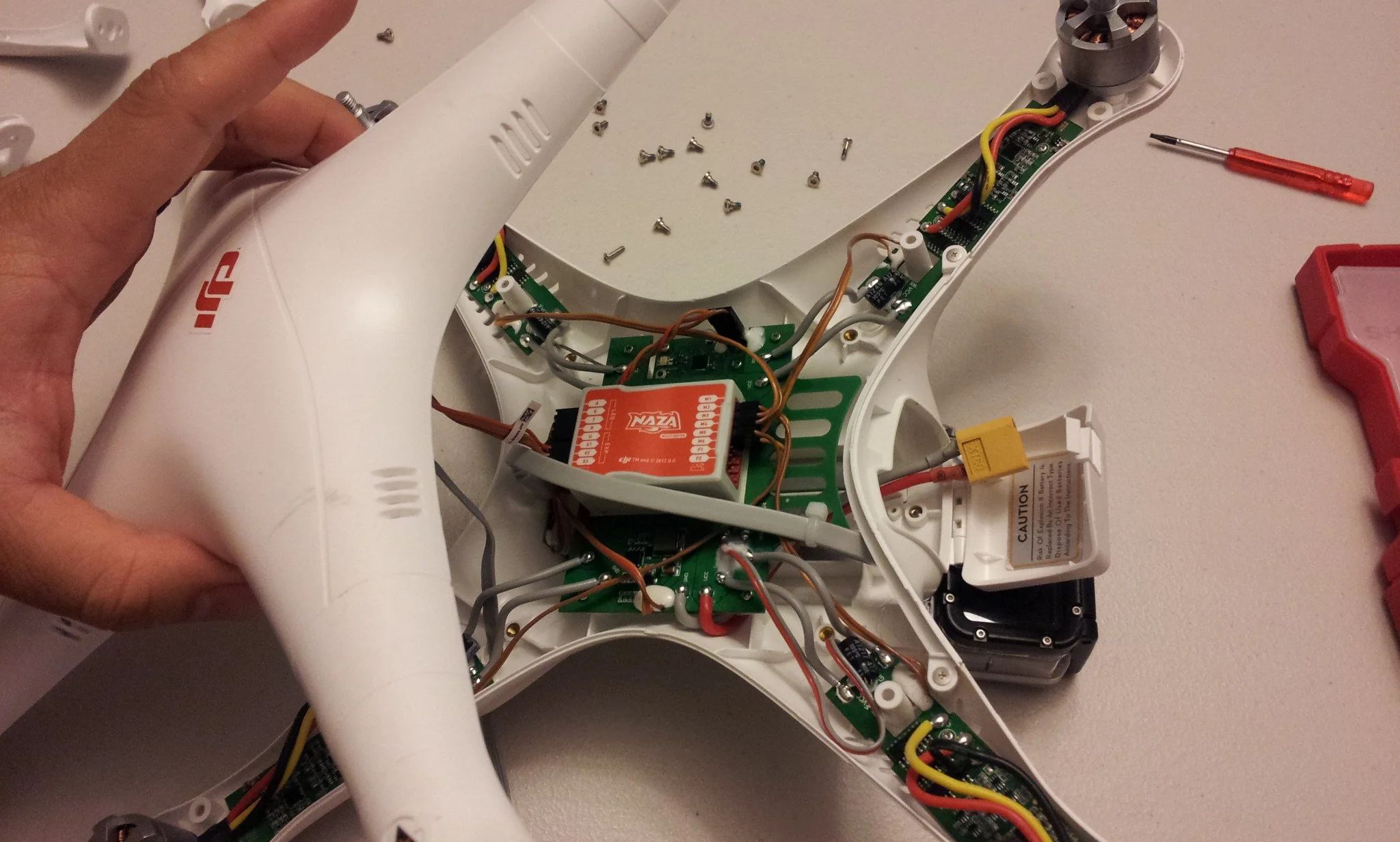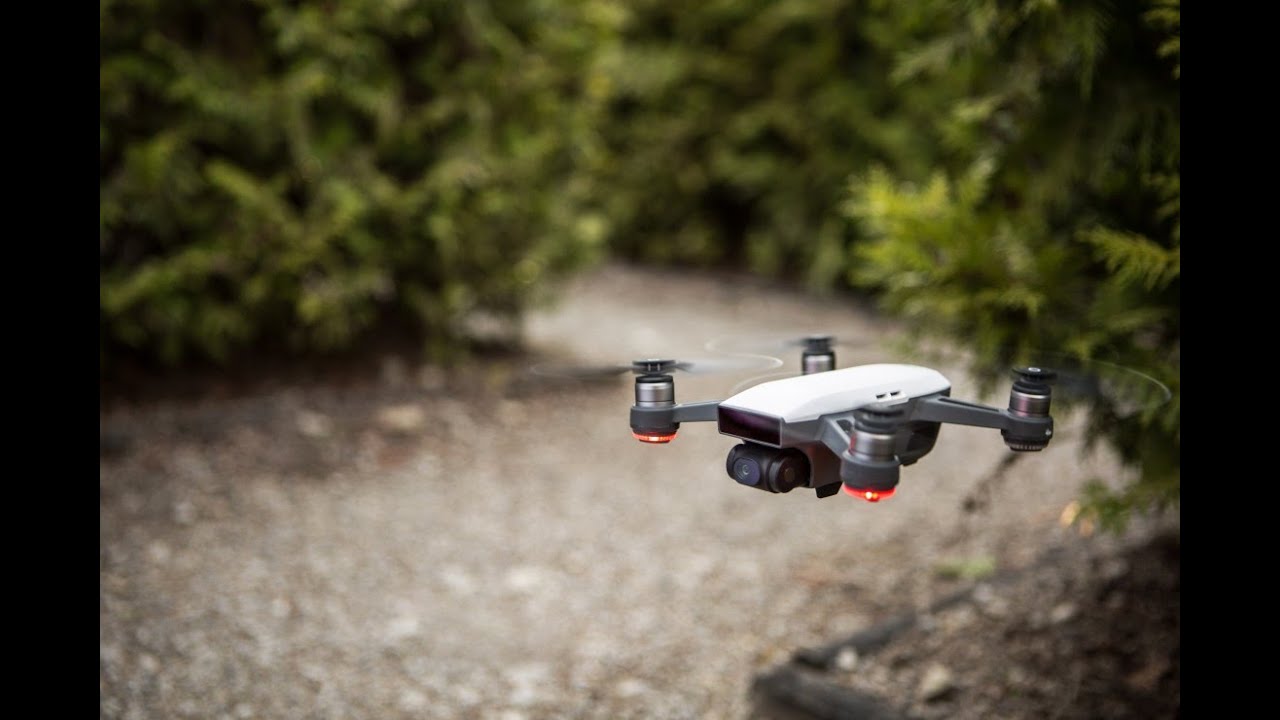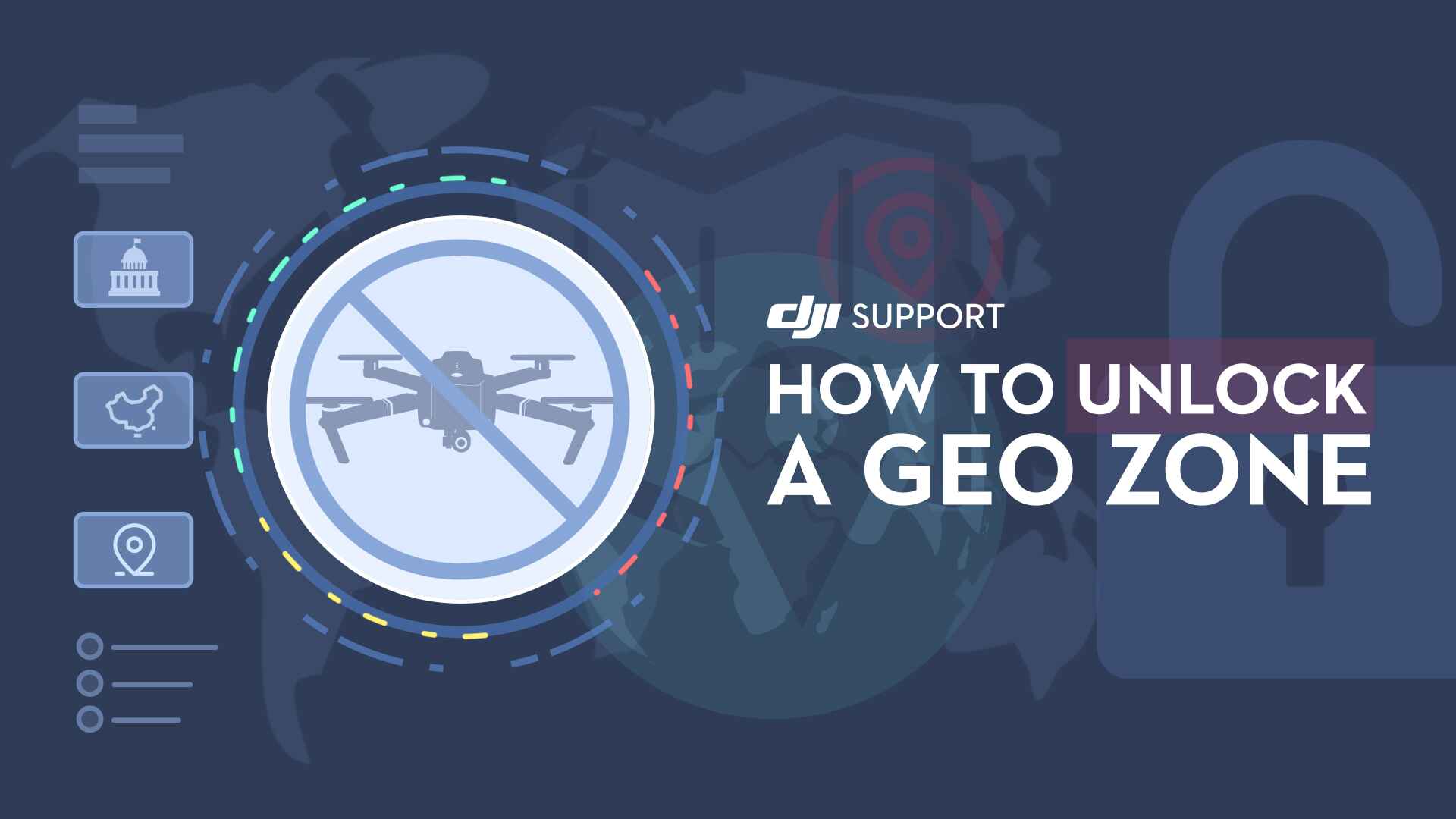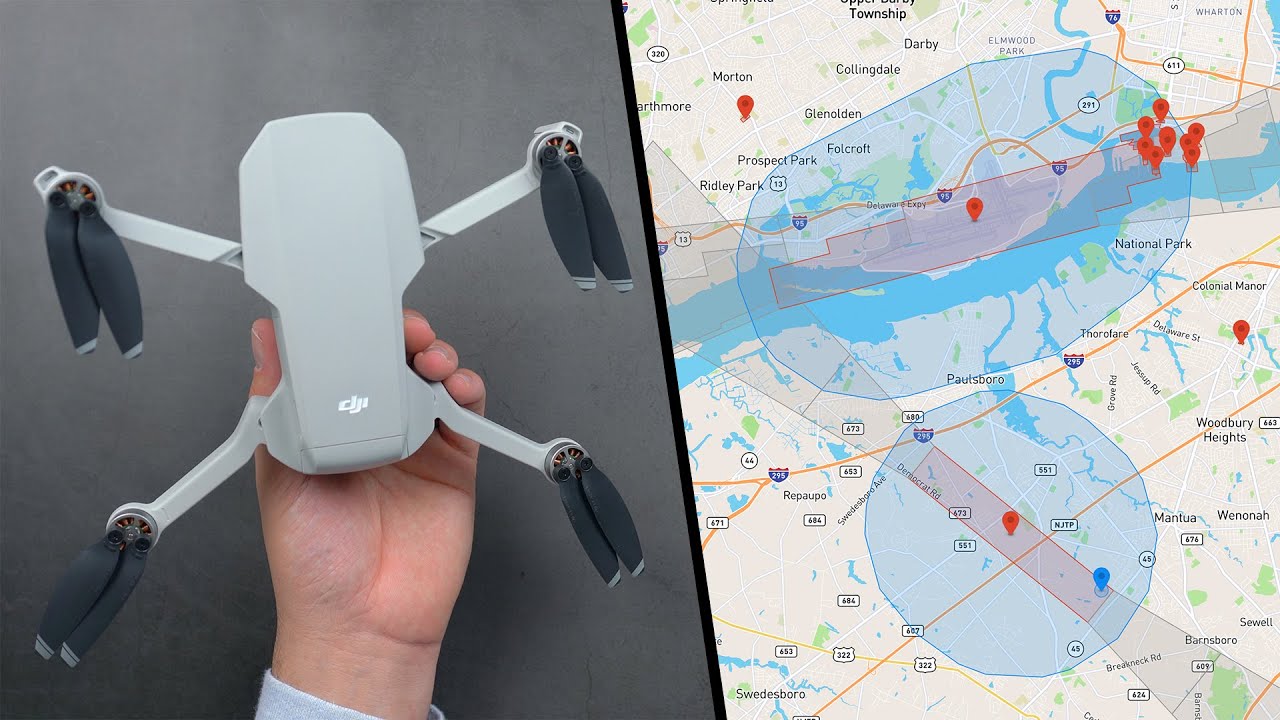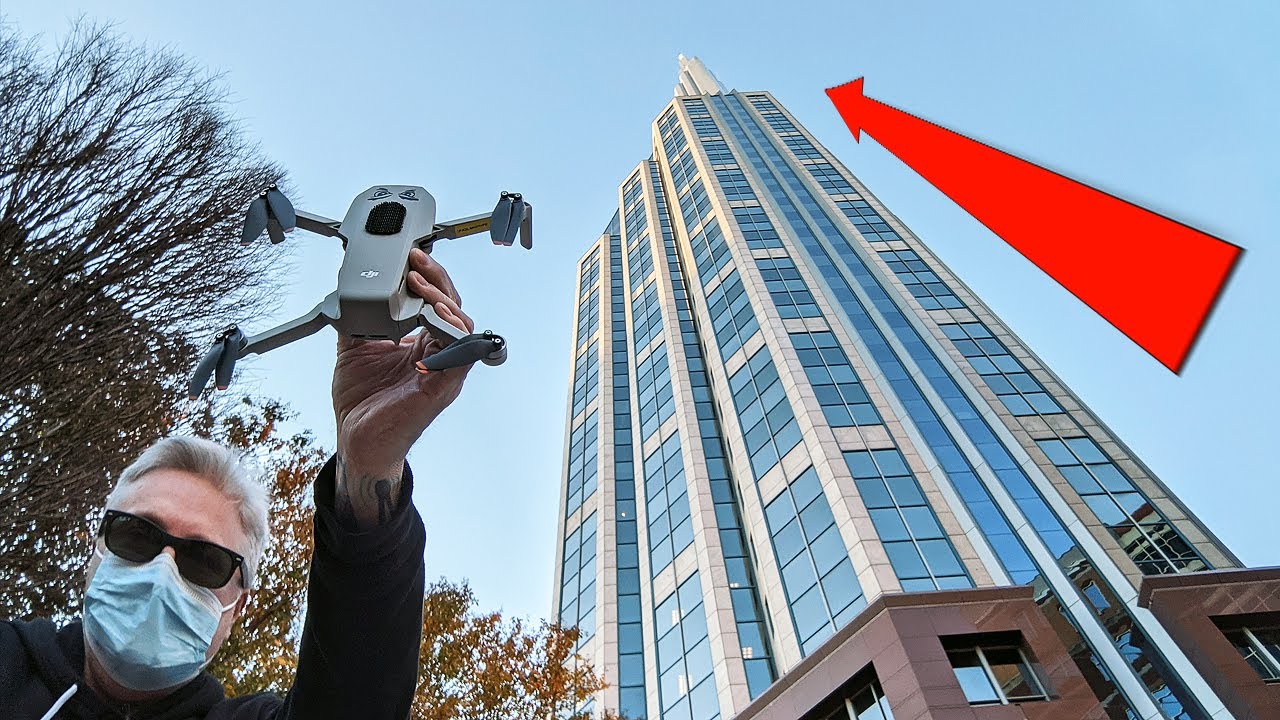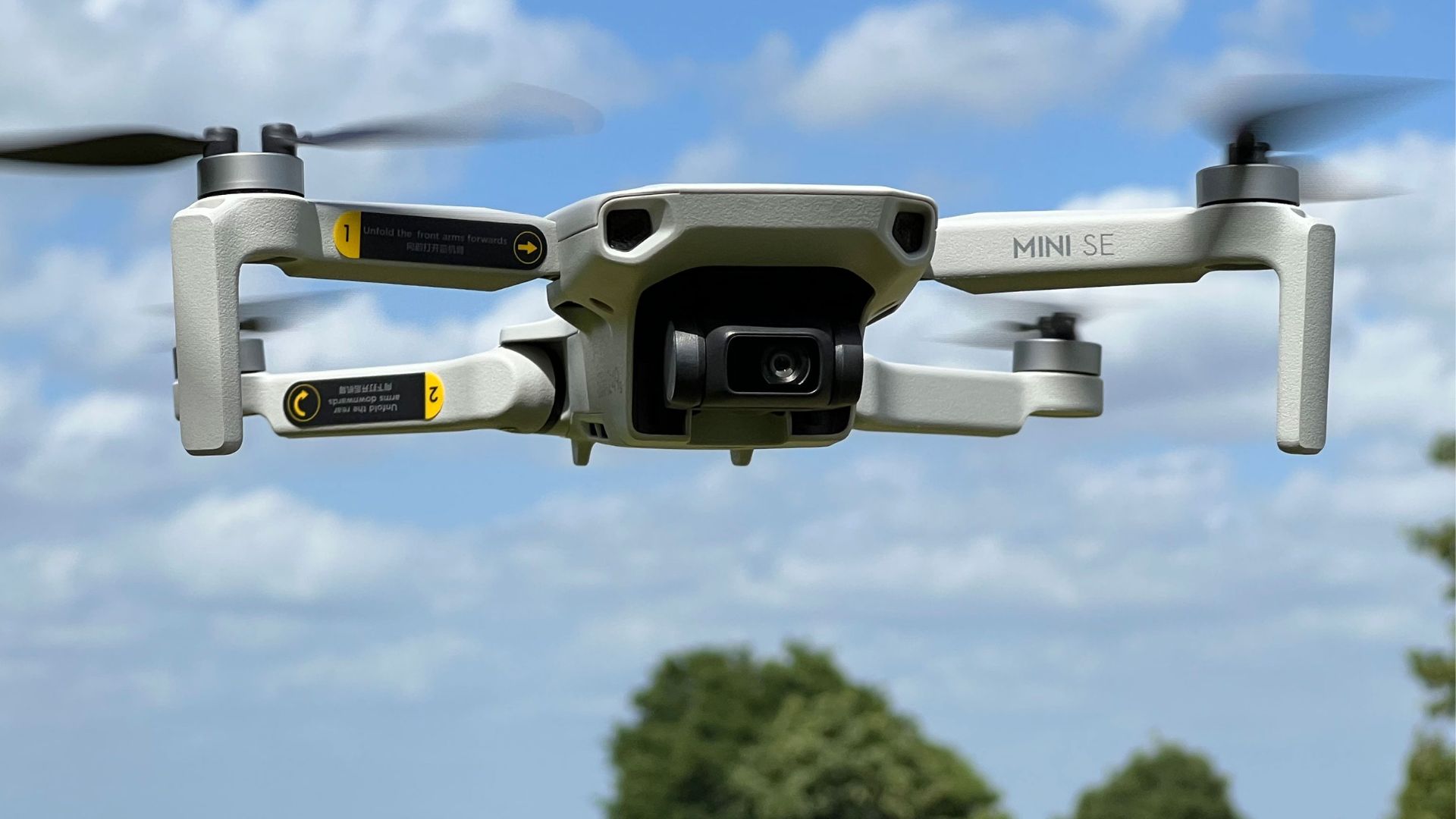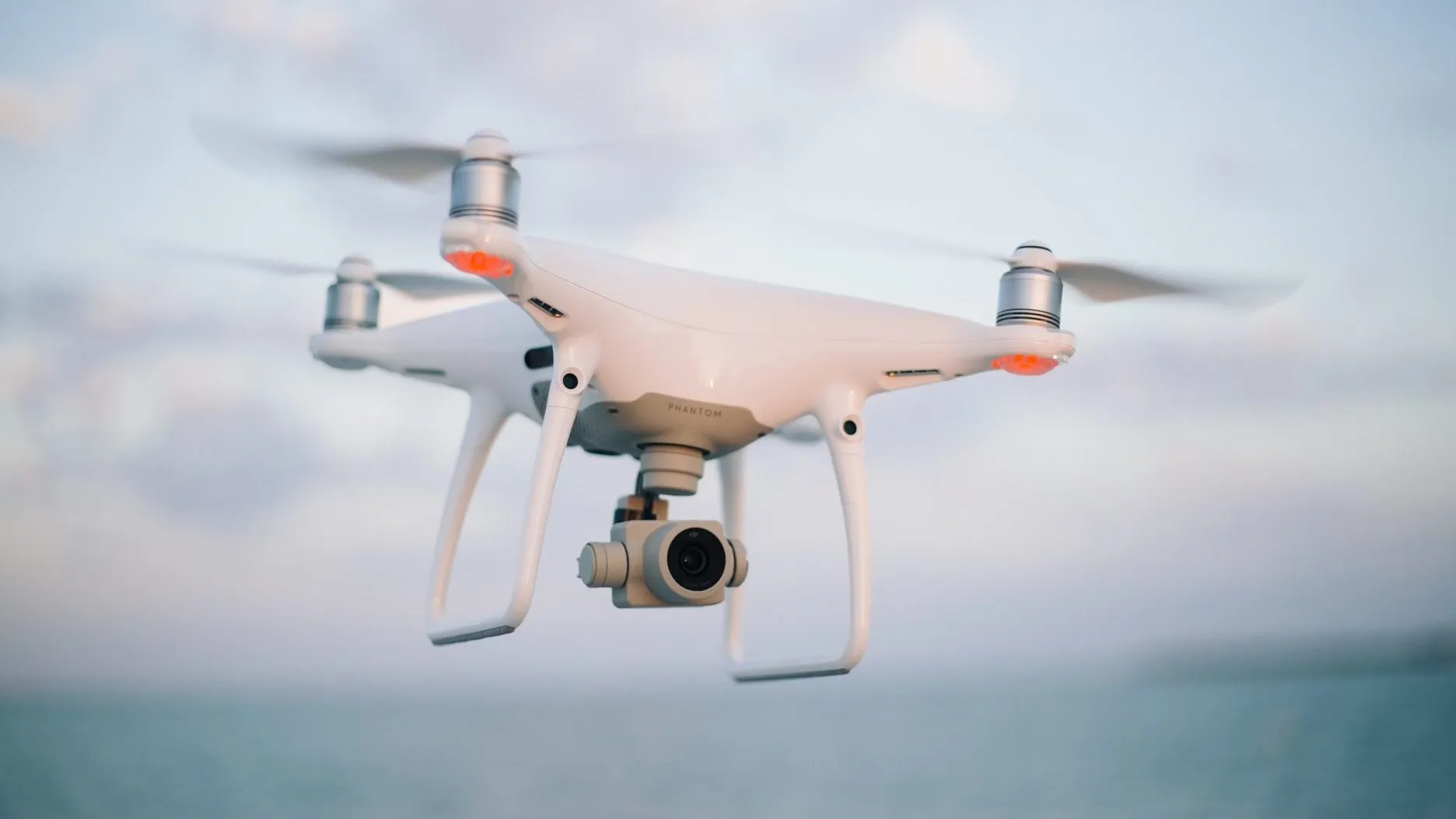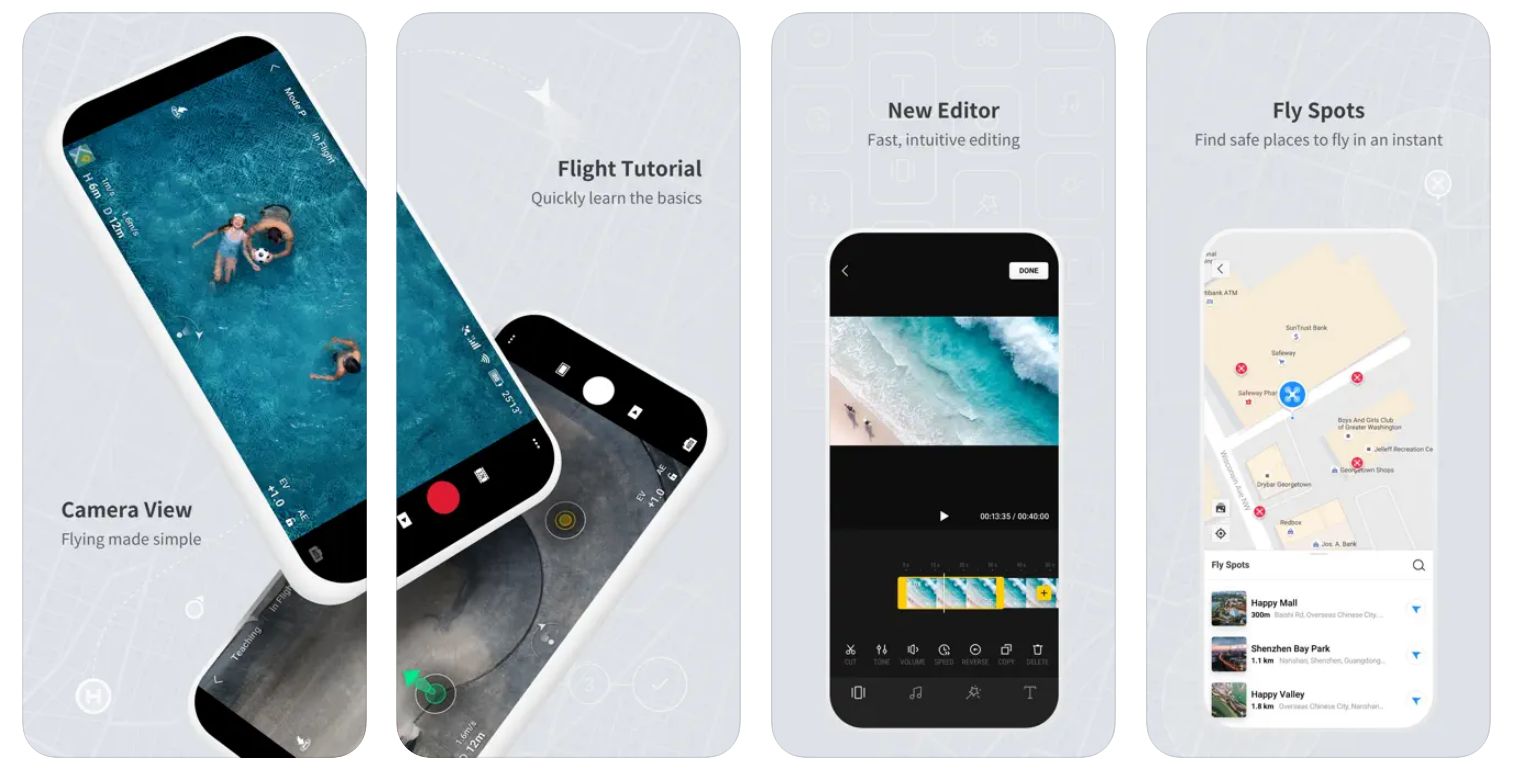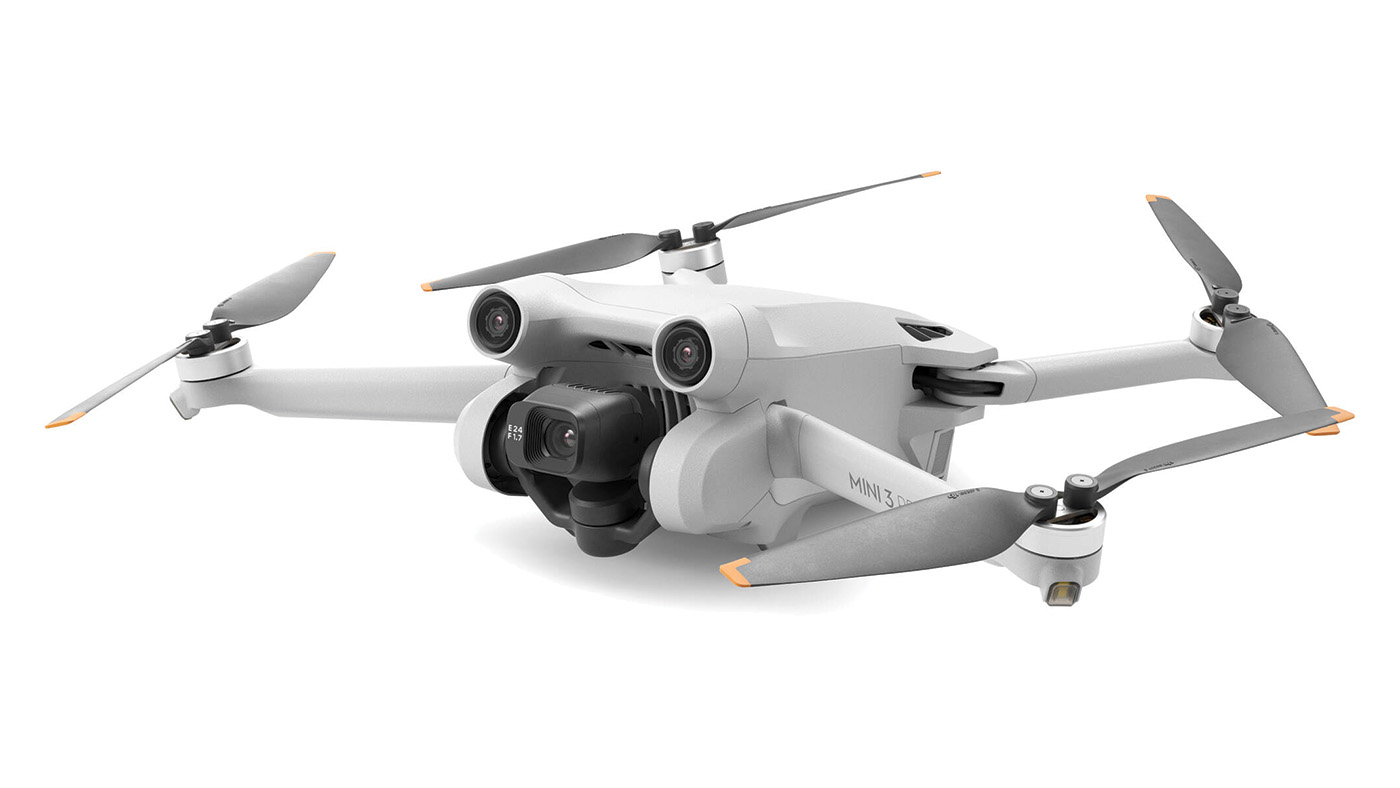Introduction
Unmanned Aerial Vehicles (UAVs), commonly known as drones, have revolutionized various industries such as photography, videography, agriculture, and even package delivery. With their increasing popularity, drone manufacturers have incorporated safety features, including No Fly Zones, to prevent users from flying in restricted areas such as airports, sensitive government buildings, and crowded public spaces.
No Fly Zones are programmed into the drone’s software, coupled with GPS technology, to ensure compliance with aviation regulations and to safeguard public safety. However, as drone enthusiasts seek more freedom and versatility, some may consider bypassing these restrictions, albeit with caution and respect for regulations.
Before delving into the methods of bypassing No Fly Zones, it is important to understand the reasons why individuals may want to do so. It’s crucial to note that this article does not encourage or endorse illegal activities or flying in restricted zones. The purpose here is to provide information and awareness regarding the topic.
Some drone users may encounter situations where a No Fly Zone is enforced due to outdated maps or incorrect data. In these instances, users with a legitimate purpose may find it frustrating to be restricted from flying in areas that are actually permissible. Additionally, some professionals, such as commercial photographers or filmmakers, might require specific shots or footage from certain restricted areas, where traditional authorization processes might be time-consuming or impractical.
However, it’s essential to acknowledge the risks and legal implications involved in attempting to bypass No Fly Zones. Unlawful use of drones can have severe consequences, including legal repercussions, fines, confiscation of equipment, and damage to public perception of drone operators.
In the following sections, we will explore different methods that drone users might consider when attempting to bypass No Fly Zones. It is important to note that these methods may involve overriding or modifying the drone’s built-in safety features, and doing so should be approached with extreme caution and responsibility.
Understanding No Fly Zones
No Fly Zones are geographical areas where drone flights are restricted or prohibited due to safety, security, or privacy concerns. These areas are typically designated by aviation authorities, local governments, or drone manufacturers themselves.
The purpose of No Fly Zones is to prevent unauthorized drone flights near sensitive locations such as airports, military bases, government facilities, and crowded public spaces. These restrictions are in place to mitigate potential risks, including collisions with manned aircraft, interference with emergency operations, and invasion of privacy.
No Fly Zones are often implemented using geofencing technology, which utilizes GPS coordinates to create virtual boundaries. When a drone equipped with geofencing capabilities enters a restricted zone, it will automatically limit its altitude or prevent further flight altogether. This technology ensures that drone operators adhere to aviation regulations and fly safely within approved areas.
The boundaries of No Fly Zones are constantly updated and shared with drone manufacturers, who then incorporate these restrictions into their products’ firmware. This allows drones to have real-time awareness of restricted areas and prevents users from inadvertently entering prohibited airspace.
It’s important for drone pilots to stay informed about No Fly Zones and to regularly update their drone’s software to ensure compliance. Many reputable drone manufacturers provide software and firmware updates that include the latest information about restricted areas, helping to mitigate the risk of accidental violations.
Furthermore, there are different categories of No Fly Zones, each with varying restrictions. Some zones may have a complete ban on drone flights, while others may only impose altitude limitations or require specific authorizations to fly.
Public safety is the primary driver behind the implementation of No Fly Zones. Adhering to these restrictions not only promotes responsible drone usage but also helps to maintain a positive reputation for the drone community as a whole.
In the following sections, we will explore the reasons why someone might want to bypass these No Fly Zones, as well as the potential risks and legal implications associated with such actions.
Why Would You Want to Bypass No Fly Zones?
While No Fly Zones are put in place for valid safety and security reasons, there may be instances where drone pilots have legitimate motives to bypass these restrictions. It is important to note that bypassing No Fly Zones should only be considered in exceptional circumstances, and cautious judgment must be exercised at all times.
One reason someone might want to bypass a No Fly Zone is when outdated or inaccurate mapping data incorrectly designates an area as restricted. This can be frustrating for drone operators who are aware that flying in that specific location is permissible and poses no risk to aviation or public safety. In such cases, individuals might consider bypassing the No Fly Zone to avoid unnecessary flight restrictions.
Additionally, professional photographers, videographers, or filmmakers may require specific shots or footage from areas that are designated as No Fly Zones. These creative professionals might find traditional authorization processes time-consuming, restrictive, or impractical for their work. In such scenarios, drone pilots may be tempted to bypass No Fly Zones to capture the desired imagery.
However, it is essential to remember that respect for regulations and safety should always take precedence over personal or professional motivations. The potential risks and legal implications of bypassing No Fly Zones should be carefully considered and weighed against the objective at hand.
Furthermore, it’s worth noting that drone technology is constantly evolving, and manufacturers are continuously working to improve their geofencing systems. Future advancements may provide more flexibility and streamlined authorization processes, reducing the need to bypass No Fly Zones entirely.
In the following sections, we will explore different methods that drone pilots might consider when attempting to bypass No Fly Zones. It is vital to approach these methods with the utmost caution, responsibility, and adherence to local regulations to ensure the safety of both the pilot and the public.
Risks and Legal Implications
Attempting to bypass No Fly Zones comes with significant risks and serious legal implications. It is crucial to fully understand and appreciate these consequences before considering any action that would defy established regulations.
One of the primary risks associated with bypassing No Fly Zones is the potential for accidents and collisions. These restricted areas are often near airports, crowded public spaces, or sensitive government facilities where manned aircraft operate. By entering these zones without permission, there is an increased risk of a drone colliding with an aircraft, endangering the lives of those on board and potentially causing catastrophic accidents. The responsibility for airspace safety lies with all drone operators, and bypassing No Fly Zones significantly increases the risk of such incidents.
Legal implications of bypassing No Fly Zones can be severe. Most countries have strict laws and regulations governing drone usage, including fines, confiscation of equipment, and potential criminal charges for unauthorized flight in restricted areas. Violating No Fly Zones can result in legal repercussions that extend beyond monetary penalties, damaging both personal reputations and the broader perception of drone pilots as responsible operators.
Moreover, bypassing No Fly Zones can lead to negative consequences for the entire drone community. Instances of individuals deliberately disregarding regulations and flying in restricted areas can lead to increased public scrutiny, tighter restrictions, and stricter enforcement by authorities. This not only hampers the progress and acceptance of drones as a valuable technology but also exacerbates concerns regarding safety and privacy.
It is important to remember that regulations are put in place to safeguard public safety, national security, and personal privacy. Drone operators have a responsibility to be law-abiding citizens and to fly in a manner that respects these principles. Prioritizing safety and compliance with No Fly Zones is essential to maintain a positive image for the drone industry and to foster a safe and inclusive airspace environment for all users.
In the following sections, we will explore different methods that individuals might consider if they still decide to attempt bypassing No Fly Zones. However, it is imperative to understand that these methods may involve overriding or modifying the drone’s built-in safety features, and doing so should always be approached with extreme caution and a thorough understanding of the potential risks and legal consequences.
How to Bypass No Fly Zones
Disclaimer: Bypassing No Fly Zones is not recommended and should only be considered in exceptional circumstances. Drone operators should always prioritize safety, legality, and compliance with regulations. The following methods are provided for informational purposes only.
If, after careful consideration of the risks and legal implications, individuals still decide to attempt bypassing No Fly Zones, there are a few methods that they might consider. It’s important to note that these methods may involve overriding or modifying the drone’s built-in safety features, and doing so should only be done with a thorough understanding of the potential risks involved.
Method 1: Unlocking No Fly Zones with DJI Authorization Zones
Drone manufacturer DJI offers an authorization system called DJI Authorization Zones, which allows qualified pilots to temporarily unlock restricted areas for authorized flight. Pilots must submit their credentials and request access through the DJI GO app or website. If the request is approved, the drone’s flight restrictions will be lifted within the designated time window and specific area.
Method 2: Using Third-Party Hacks or Mods
There are third-party hacks or modifications available that claim to disable or bypass the No Fly Zone restrictions on drones. These methods typically involve modifying the drone’s firmware or using software hacks to override the built-in geofencing system. However, it is crucial to note that these methods are not endorsed by drone manufacturers, may void the drone’s warranty, and can have serious legal implications.
Method 3: Changing GPS Coordinates on Your Device
Another method some individuals may consider is manipulating the GPS coordinates on their devices in order to fool the drone’s geofencing system into thinking they are not in a restricted area. This could involve using software or GPS spoofing tools to alter the location information communicated to the drone. However, altering GPS coordinates for the purpose of bypassing No Fly Zones is illegal in many jurisdictions and can result in severe penalties.
It is essential to understand that attempting to bypass No Fly Zones is a risky endeavor. Drone operators should always prioritize safety, legality, and compliance with regulations. The potential consequences, both in terms of accidents and legal repercussions, should be carefully considered before pursuing any method to bypass No Fly Zones.
Furthermore, it’s worth noting that bypassing No Fly Zones undermines the purpose of these restrictions, which are in place to protect public safety, national security, and personal privacy. Drone pilots have a responsibility to be responsible operators and to fly in a manner that respects these values.
Remember, it is always best to fly within approved zones and adhere to local regulations. If there is a legitimate need to access a restricted area, exploring legal, authorized means of obtaining clearance should be the preferred course of action.
Method 1: Unlocking No Fly Zones with DJI Authorization Zones
DJI, one of the leading manufacturers of drones, offers a system called DJI Authorization Zones that allows qualified pilots to request access and temporarily unlock restricted areas for authorized flight. This method provides a legitimate way to fly in No Fly Zones after obtaining proper clearance from the relevant authorities.
To unlock a No Fly Zone using DJI Authorization Zones, drone pilots need to submit their credentials and flight information through the DJI GO app or the DJI website. The verification process typically involves providing identification, proof of certification or licensing, and specifying the time and area for which the authorization is being requested.
Once the request is submitted, DJI will review the information and either approve or deny the authorization. If approved, the drone’s flight restrictions within the specified time window and designated area will be temporarily lifted, allowing the pilot to fly in the previously restricted zone.
It is important to note that DJI Authorization Zones are subject to certain conditions and limitations. The areas that can be unlocked are determined by local regulations and authorities. Additionally, the duration of the unlock is typically limited to a maximum of 72 hours. Drone pilots must ensure that they comply with all authorized flight guidelines and regulations while operating within these unlocked zones.
Using DJI Authorization Zones provides a legal and responsible means of accessing No Fly Zones when required. It allows professional drone operators, such as photographers and filmmakers, to obtain the necessary clearances for capturing desired footage or conducting authorized commercial operations.
However, it is crucial to carefully follow the verification and authorization process as required by DJI and the respective authorities. Any misuse or unauthorized access to No Fly Zones can result in severe consequences, including legal repercussions and damage to the reputation of the drone community.
For drone pilots who have a legitimate purpose to fly in restricted areas, obtaining proper authorization through DJI Authorization Zones is strongly recommended. It ensures compliance with regulations, prioritizes safety, and avoids unnecessary risks that bypassing No Fly Zones may pose.
It’s worth mentioning that DJI constantly updates its geofencing system to reflect changes in No Fly Zones and other restricted areas. This ongoing improvement helps drone pilots stay informed about the latest restrictions and ensures that their drones operate within the approved guidelines.
Keep in mind that different drone manufacturers may have their own variation of No Fly Zone unlocking systems. The specific process and requirements may vary, so it’s important to consult the documentation and resources provided by the manufacturer.
Method 2: Using Third-Party Hacks or Mods
Another method some individuals might consider to bypass No Fly Zones is by using third-party hacks or modifications. These hacks or mods claim to disable or bypass the built-in safety features and restrictions imposed by the drone’s manufacturer.
It’s important to note that using third-party hacks or mods to bypass No Fly Zones is not recommended, and it may have serious legal implications. These methods are not endorsed by drone manufacturers and may violate local laws and regulations governing drone usage.
Third-party hacks or mods typically involve modifying the drone’s firmware or using software hacks to override the geofencing system. The idea behind such hacks is to trick the drone’s internal software into thinking it is not in a restricted zone, allowing the pilot to fly in No Fly Zones without any limitations.
However, it’s crucial to understand the potential risks and consequences of utilizing these hacks. Firstly, modifying a drone’s firmware can void the manufacturer’s warranty, potentially leaving the owner responsible for any repairs or replacements required in the future.
Moreover, using unauthorized third-party hacks or mods can compromise the drone’s safety features, increasing the risk of accidents and collisions with other aircraft or objects. By disabling or bypassing the No Fly Zone restrictions, the pilot assumes full responsibility for ensuring safe flight operations, which can be a daunting task without the automated safeguards in place.
In addition to the technical and safety risks, it’s important to consider the legal implications of using third-party hacks or mods. In many jurisdictions, unauthorized flight in No Fly Zones is illegal and can result in severe penalties, including fines, confiscation of equipment, and potential criminal charges.
Drone manufacturers continuously work to enhance the safety and security features of their products, including geofencing systems. These efforts aim to ensure responsible flight and protect airspace integrity. Bypassing these systems undermines these efforts and can have negative consequences for the entire drone community.
It is strongly advised to strictly adhere to the guidelines and safety protocols established by the drone manufacturers and relevant authorities. Flying within approved zones and respecting No Fly Zones is crucial for the safety of both aerial operations and public trust in drone technology.
Remember, prioritizing safety, legality, and compliance with regulations should always be the top priority for drone operators. Exploring authorized means of accessing restricted areas, such as DJI Authorization Zones, is encouraged over pursuing the use of unauthorized third-party hacks or mods.
Always stay informed about local regulations and respect the rules and boundaries set forth by drone manufacturers and aviation authorities to ensure responsible and lawful drone operation.
Method 3: Changing GPS Coordinates on Your Device
Another method that some individuals might consider to bypass No Fly Zones is by changing the GPS coordinates on their device. By altering the location information communicated to the drone, they aim to trick the geofencing system into believing they are not in a restricted area.
It’s important to note that changing GPS coordinates for the purpose of bypassing No Fly Zones is illegal in many jurisdictions and can have severe consequences. It is strongly discouraged to engage in such activities, as they can undermine the integrity of airspace regulations and compromise public safety.
Manipulating GPS coordinates involves using software or GPS spoofing tools to override the device’s location information. These tools can feed false data to the drone’s GPS receiver, tricking it into thinking it is in a different location than it actually is.
Attempting to change GPS coordinates to fly in No Fly Zones not only violates legal regulations but also poses significant risks. By circumventing geofencing restrictions, drone pilots assume full responsibility for ensuring the safety and avoidance of collisions with other aircraft, objects, or people.
It’s important to recognize that No Fly Zones are implemented for valid reasons, such as protecting sensitive areas, ensuring aviation safety, and safeguarding public privacy. By attempting to bypass these restrictions, individuals not only put themselves at risk but also jeopardize the overall acceptance and trust in the drone community.
Moreover, utilizing GPS spoofing methods may lead to legal consequences. Violating No Fly Zones can result in severe penalties, including fines, confiscation of equipment, and potential criminal charges. The repercussions can extend beyond financial or legal consequences, tarnishing personal reputations and negatively impacting the perception of drone operators.
Drone manufacturers and authorities are continuously working to improve geofencing systems and keep them up to date with the latest No Fly Zone information. Relying on authorized methods, such as DJI Authorization Zones, is highly encouraged to obtain necessary clearances for restricted areas when required.
Responsible drone operation entails adhering to the rules and regulations set forth by manufacturers and aviation authorities. It is essential to prioritize safety, legality, and compliance, avoiding any attempts to manipulate or tamper with the GPS coordinates to bypass No Fly Zones.
By flying within approved zones and respecting No Fly Zones, drone operators contribute to a safe and responsible airspace environment, fostering the positive growth and acceptance of drone technology.
Considerations and Safety Measures
When it comes to considering and potentially bypassing No Fly Zones, there are several important considerations and safety measures that drone operators should keep in mind.
Firstly, it is essential to assess the necessity of flying in a restricted area. Understanding the reasons behind the No Fly Zone designation and the potential risks associated with entering such areas is crucial in making an informed decision. Only legitimate and compelling reasons should warrant any attempt to bypass these restrictions.
Secondly, drone pilots must thoroughly understand the local regulations governing drone flight and respect the authorities responsible for enforcing them. Each jurisdiction has its own set of rules and restrictions that drone operators must follow. Failing to comply with these regulations can have severe legal and financial consequences.
Thirdly, prioritizing safety should always be the guiding principle. No Fly Zones are implemented to ensure safety and protect both aviation activities and public well-being. By attempting to bypass these restrictions, drone operators assume full responsibility for maintaining safety and avoiding potential hazards.
Furthermore, drone operators should regularly update their drone’s firmware to ensure that the most up-to-date information on No Fly Zones is incorporated. Manufacturers continuously improve their geofencing systems based on changing regulations and restricted area designations, making it crucial to stay informed and compliant.
Additionally, maintaining a strong understanding of airspace awareness is vital. Utilizing tools such as airspace mapping applications or consulting relevant sources like NOTAMs (Notices to Airmen) can provide valuable information on restricted areas and help drone pilots plan their flights accordingly.
Understanding the limitations of technology is also important. While geofencing systems are designed to prevent flights in restricted areas, they are not foolproof. Errors can occur, and outdated or incorrect mapping data may create inaccuracies in No Fly Zone designations. Drone pilots should always exercise caution, double-check information, and seek alternative means of authorization when required.
Lastly, fostering a culture of responsible drone operation within the community is essential. By adhering to regulations, respecting No Fly Zones, and promoting safe flying practices, drone operators can help maintain a positive image for the industry and build public trust.
Ultimately, bypassing No Fly Zones should be considered as a last resort, only in exceptional circumstances, and when all legal and authorized options have been exhausted. It is the responsibility of every drone operator to prioritize safety, legality, and compliance with regulations, ensuring the well-being of both the drone industry and the public at large.
Conclusion
No Fly Zones are established to ensure the safety, security, and privacy of airspace and ground locations. While there may be instances where individuals consider bypassing these restrictions, it is important to understand the risks and legal implications associated with such actions.
Drone operators should prioritize safety, legality, and compliance with regulations at all times. Attempting to bypass No Fly Zones should only be considered in exceptional circumstances, and even then, all authorized means of accessing restricted areas should be explored first.
Methods like DJI Authorization Zones provide a legitimate way to temporarily unlock restricted areas for authorized flight. Seeking proper authorization and adhering to local regulations help ensure responsible drone operation.
Utilizing third-party hacks or mods to bypass No Fly Zones is strongly discouraged. These methods can compromise safety features, violate regulations, and result in significant legal consequences. Such actions can also damage the reputation of the drone community as a whole.
Changing GPS coordinates to bypass No Fly Zones is illegal and poses severe risks. By doing so, drone operators undermine the integrity of airspace regulations, compromising public safety, and potentially encountering legal repercussions.
Considerations such as assessing the necessity of flying in restricted areas, staying informed about local regulations, regularly updating drone firmware, and prioritizing safety are crucial for responsible drone operation.
Ultimately, respecting No Fly Zones is of utmost importance. Drone pilots should always prioritize safety, abide by regulations, and fly responsibly. Engaging in activities that compromise safety or violate regulations not only poses risks to individuals and property but also hampers the growth and acceptance of drone technology.
By upholding high standards of professionalism and adhering to the guidelines set forth by drone manufacturers and authorities, drone operators can contribute to the positive development and safe integration of drones into our society.







